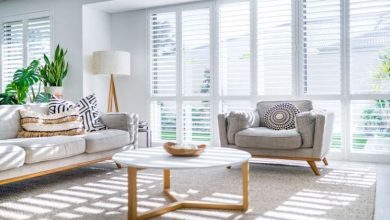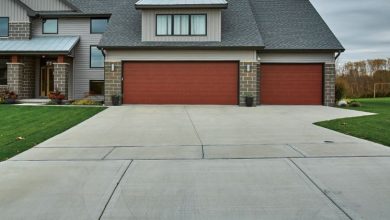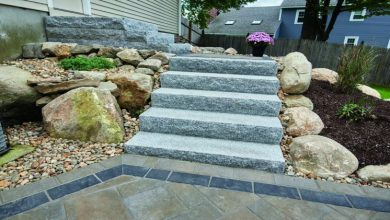Roof Repair for Water Damage: Finding and Fixing Roof Leaks

The roof of your house is its first line of defense against the weather, but even the best-built roofs can eventually leak. If roof leaks are not fixed, they can cause significant water damage in addition to being an annoyance. We will discuss the typical reasons for roof leaks, how to find them, and the best ways to fix and stop water damage in this blog post.
Typical Reasons for Roof Leaks
We must first address the underlying causes of roof leaks before moving on to the repair procedure. These are a few typical offenders:
- Broken Shingles
Shingles that are broken, missing, or damaged can let water seep into the roof’s underlying layers. Age, exposure to the elements, or physical harm are frequently the causes of this.
- Problems with Flashing
Your roof’s joints and transitions, like the areas around vents, skylights, chimneys, and roof valleys, are sealed with flashing. Water may seep in if the flashing is damaged or installed incorrectly.
- Blocked Drains
Water backs up and may potentially seep under the edge of the roof due to clogged gutters and downspouts that obstruct proper drainage.
- Ice Dams
Ice dams can develop on the edge of a roof in cold climates, obstructing the flow of melting snow off the roof. The water that’s been trapped may seep into the roof and result in leaks.
- Infiltrations into Roofs
If not properly sealed, any penetrations through the roof, such as exhaust vents, plumbing vents, or satellite dish mounts, could become potential leak points.
- Old Roof
Roofs are more vulnerable to damage as they get older. Over time, the material may deteriorate and develop leaks.
How to Spot Roof Leaks
Early detection of a roof leak is essential to avoiding extensive water damage to the interior and structural elements of your house. The following indications point to a possible roof leak:
- Watermarks on Walls and Ceilings
Water stains on your walls and ceilings are unmistakable signs that your roof is leaky. They frequently show up as streaks or patches of discoloration.
- Water Leaking
Water leaking from the ceiling is a dead giveaway of a roof leak. Take quick action to stop the damage from getting worse.
- Growth of Mold or Mildew
If you notice mold or mildew growing on your walls or ceiling, there may be a roof leak hidden there. Since mold needs moisture to grow, moist environments are often ideal for it.
- Musty Scents
A roof leak can lead to mold growth and water infiltration, which can cause persistent musty odors in your home.
- Drooping or Vesselerating Ceilings
Sinking or bubble-looking ceilings can be signs of roof leaks and water damage. This could mean that the integrity of the ceiling has been weakened by moisture.
- External Harm
Examine your roof from the outside for any evidence of wear and tear that could result in leaks, such as broken or missing shingles, visible cracks in the flashing.
Steps for Repairing Roof Leaks
As soon as you discover a leak in your roof, you must act quickly to stop additional damage. The following procedures will help you fix roof leaks:
- Prioritize Safety
Prioritizing safety is crucial when addressing roof leaks. Make sure the leak doesn’t cause any structural damage or electrical hazards for you or your family.
- Keep the Leak Inside
Put buckets or containers beneath the leak to catch the dripping water. This will assist in halting additional harm to the interior of your house.
- Make the Space Clear
To stop water damage, remove any valuables, electronics, or furniture from the impacted area. If it is not possible to move the items, cover them with tarps or plastic sheets.
- Find the Original
Examine your crawl space or attic to find the leak’s origin. Look above where the leak appears inside your home for signs of visible damage, such as wet insulation or water stains.
- Transient Patch
Applying a temporary patch to the leaky area is an option if you can reach the roof safely and the weather permits. To seal the damaged area until a more permanent repair can be made, use roofing cement or roofing tape.
- Speak with an Expert
It’s best to get in touch with a qualified roof repair South Bend to determine the full extent of the damage and carry out a comprehensive repair. Their proficiency and equipment will guarantee a long-lasting resolution.
- Mend Or Swap Out Damaged Components
Your roofing contractor will either replace or repair the damaged roofing materials, depending on the extent of the damage. This could entail fixing any structural problems, resealing flashing, or changing the shingles.
- Deal with Fundamental Problems
A qualified contractor will also look into any underlying problems that might have caused the roof leak and fix them. This can entail adding more flashing, unclogging gutters, or enhancing attic ventilation.
- Conduct a Water Test
Your contractor should run a water test once the repair is finished to make sure the leak is fixed completely and no new problems have surfaced.
- Continual Upkeep
Plan for routine roof maintenance and inspections to help stop leaks in the future. By doing so, possible problems can be found and addressed before they become more serious ones.
How to Stop Roof Leaks
The best defense against roof leaks and the potential water damage they can cause is often prevention. The following are some precautions you can take:
- Consistent Roof Inspections
Arrange for routine professional roof inspections to identify and resolve problems before they become more serious.
- Maintain Clean Gutters
To guarantee appropriate water drainage, clean and maintain your gutters and downspouts on a regular basis.
- Take Care of Ice Dams
Make sure your attic has enough ventilation and insulation in cold climates to avoid ice dams.
- Prune Branches That Overhang
Reduce the length of tree branches hanging over your roof to shield it from storm damage and strong winds.
- Cover Roof Openings
To avoid possible leak points, properly seal any roof penetrations, such as vents and chimneys.
- Select High-Grade Roofing Materials
Make an investment in premium roofing materials that are made to survive the particular climate and weather patterns in your area.
In conclusion, roof leaks are a common problem that, if left unattended, can result in serious water damage. Preserving the integrity of your house requires that you recognize the warning indications of a roof leak and act quickly to contain the problem. You can extend the life of your roof and avoid leaks by performing routine maintenance and taking preventative measures. To protect the integrity of your home and your peace of mind, don’t hesitate to contact us if you suspect a roof leak or need assistance with repairs.




